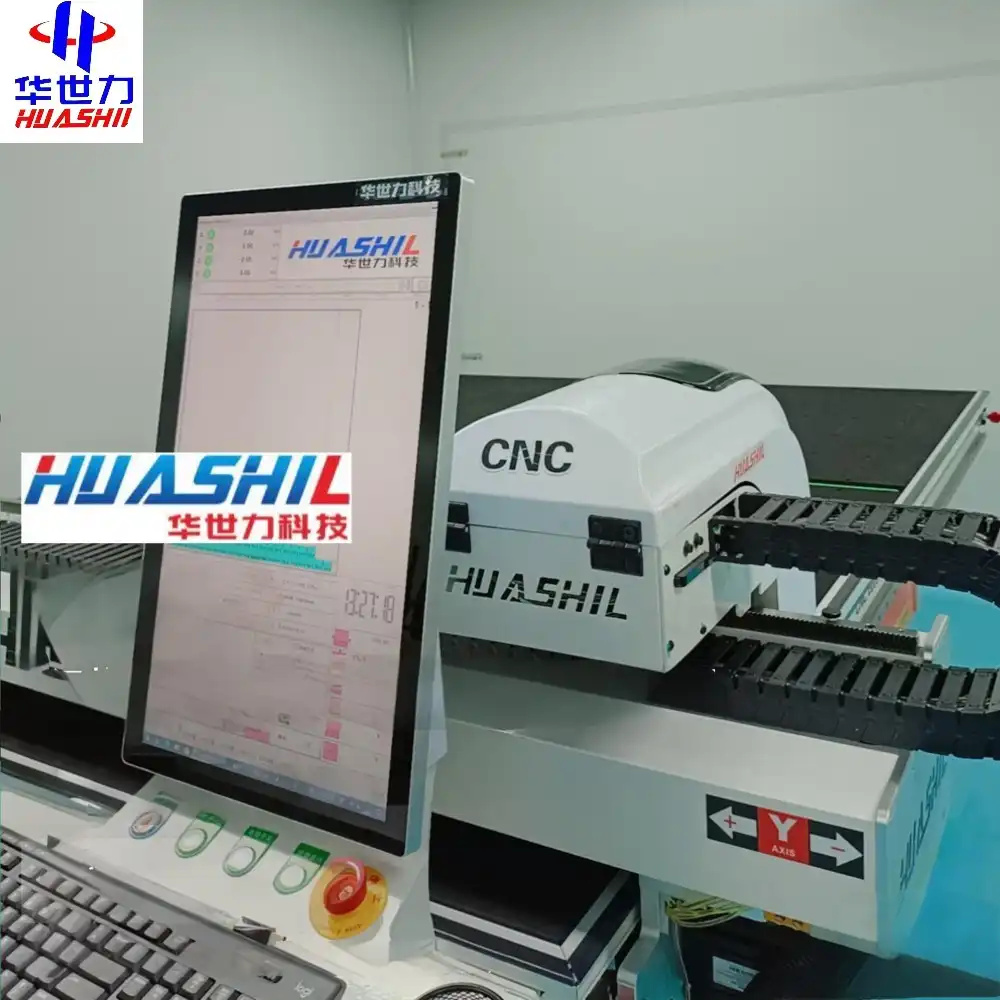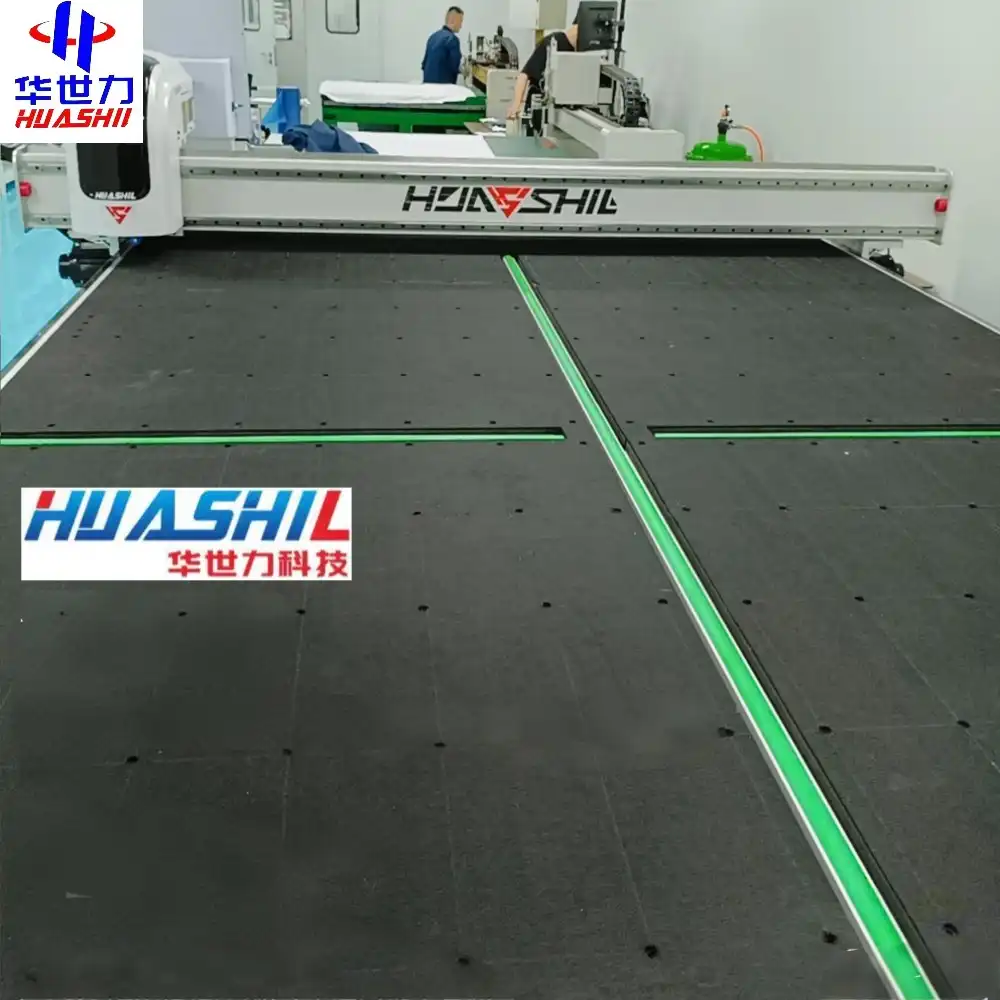Maintaining a CNC sintered stone cutting machine is crucial for ensuring its longevity, precision, and optimal performance. These sophisticated machines are designed to handle the unique challenges of cutting sintered stone, a material known for its durability and density. Regular maintenance not only extends the life of your equipment but also guarantees consistent quality in your finished products. In this comprehensive guide, we'll explore the essential maintenance practices that will keep your CNC sintered stone cutting machine operating at peak efficiency.
Daily Maintenance: Cleaning Rails and Checking Water Levels
The daily maintenance routine for your CNC sintered stone cutting machine is the foundation of its overall care. This process is straightforward but immensely important in preventing wear and tear, as well as ensuring smooth operation.
Start your day by meticulously cleaning the machine's rails. These components are the highways along which your cutting head travels, and any debris or buildup can lead to inaccuracies in cutting or even damage to the machine. Use a clean, lint-free cloth to wipe down the rails, removing any stone dust or residue that may have accumulated during the previous day's operations.
After cleaning the rails, apply a thin layer of lubricant. This step is vital in reducing friction and preventing premature wear on the moving parts. Be sure to use a lubricant that's compatible with your machine's specifications – using the wrong type can lead to more harm than good. China CNC sintered stone cutting machine manufacturers emphasize proper maintenance practices to ensure long-term performance, precision, and reliability of their equipment.
Next, check the water levels in your cooling system. Adequate cooling is essential when cutting sintered stone, as it helps to prevent overheating of both the cutting tools and the material being processed. Low water levels can lead to inadequate cooling, potentially resulting in tool damage or imperfect cuts. Top up the water reservoir if needed, and while you're at it, inspect the water for clarity. If it's become murky or contaminated, it may be time for a complete change.

Don't forget to examine the cutting tools themselves. Look for any signs of wear or damage, such as chips or dullness. Sharp, well-maintained tools not only produce cleaner cuts but also put less strain on the machine, contributing to its longevity.
Lastly, take a moment to visually inspect the entire machine. Look for any loose bolts, unusual noises, or signs of wear that might indicate a developing issue. Catching problems early can prevent costly breakdowns and extend the life of your equipment.
How to Maintain Spindle Performance and Prevent Downtime?
The spindle is the heart of your CNC sintered stone cutting machine, and its maintenance is paramount to the overall performance and longevity of your equipment. A well-maintained spindle ensures precise cutting, reduces downtime, and prolongs the life of your cutting tools.
Begin by regularly checking the spindle's temperature during operation. Excessive heat can be an early warning sign of impending issues. Most modern CNC machines have built-in temperature sensors, but it's also wise to periodically use an infrared thermometer to check for any hot spots that might indicate bearing wear or lubrication problems.
Lubrication is critical for spindle health. Consult your machine's manual for the recommended lubrication schedule and type of lubricant. Some spindles require daily lubrication, while others may have longer intervals. Never skip or delay lubrication, as this can lead to rapid wear and potential failure.
Pay close attention to unusual noises or vibrations coming from the spindle. These can be early indicators of bearing wear or misalignment. If you notice any changes in the spindle's sound or feel during operation, it's crucial to investigate immediately. Ignoring these signs can lead to catastrophic failure and expensive repairs.
Regularly inspect the spindle shaft for any signs of runout. Runout is a measure of how much the spindle deviates from its true center of rotation. Even small amounts of runout can lead to poor cut quality and accelerated tool wear. Use a dial indicator to check for runout, and if you detect any, it may be time for professional maintenance or alignment.
Keep the spindle clean and free from debris. Stone dust can accumulate quickly and potentially enter the spindle bearings, causing premature wear. Use compressed air to blow out any dust or debris from around the spindle after each use, being careful not to force contaminants further into the mechanism.
Consider implementing a predictive maintenance schedule using vibration analysis. This advanced technique can help you detect potential spindle issues before they become serious problems, allowing you to plan maintenance during scheduled downtime rather than dealing with unexpected breakdowns.
Finally, respect the spindle's speed and load ratings. Pushing the spindle beyond its designed capabilities can lead to rapid wear and potential failure. Always operate within the manufacturer's recommended parameters to ensure optimal performance and longevity.

Routine Calibration of Cutting Head and Squareness
Maintaining the precision of your China CNC sintered stone cutting machine manufacturers requires regular calibration of the cutting head and ensuring squareness. This process is essential for achieving consistent, high-quality cuts and maximizing the efficiency of your operation.
Start by checking the alignment of your cutting head. Over time, vibrations and normal wear can cause the cutting head to drift out of alignment. Use a precision square or a dial indicator to verify that the cutting head is perfectly perpendicular to the work surface. If you detect any deviation, consult your machine's manual for the proper adjustment procedure.
Next, verify the squareness of your machine's movements. This involves checking that the X, Y, and Z axes are all perfectly perpendicular to each other. A common method is to use a granite square and a dial indicator. Place the square on the machine bed and use the indicator to measure any deviations as the cutting head moves along each axis. Any discrepancies should be addressed through the machine's calibration settings or by adjusting the mechanical components as specified in your manual.
Pay special attention to the flatness of your machine's bed. An uneven bed can lead to inconsistent cutting depths and poor overall quality. Use a precision straightedge and feeler gauges to check for any high or low spots on the bed surface. If you find significant deviations, it may be necessary to re-lap the bed or seek professional maintenance.
Regularly calibrate your machine's positioning system. This typically involves using a laser interferometer or a ballbar system to measure the accuracy of the machine's movements. These tools can detect subtle inaccuracies in positioning that can accumulate over time and affect the quality of your cuts.
Don't forget to check and adjust the parallelism of your cutting bridge. This ensures that the cutting head maintains a consistent height across the entire work surface. Use a height gauge or a dial indicator to measure the distance between the cutting bridge and the machine bed at multiple points. Any variations should be corrected according to your machine's adjustment procedures.
Periodically verify the accuracy of your machine's measurement systems. This includes checking the calibration of any built-in measuring devices or probes. Use certified gauge blocks or a calibrated artifacts to confirm that your machine is measuring distances and positions accurately.
Consider implementing a regular schedule for more comprehensive geometric calibration. This process, often performed by specialized technicians, involves a thorough check and adjustment of all geometric relationships within the machine, ensuring optimal performance and accuracy.
Remember that environmental factors can affect calibration. Temperature fluctuations, in particular, can cause materials to expand or contract, potentially throwing off precise alignments. If possible, maintain a consistent temperature in your work area and allow the machine to reach thermal equilibrium before performing calibration tasks.
By diligently following these maintenance practices, you'll ensure that your CNC sintered stone cutting machine remains a reliable and precise tool in your production line. Regular care not only preserves the accuracy of your cuts but also protects your investment by extending the life of your equipment.
Conclusion
Maintaining a CNC sintered stone cutting machine is a multifaceted task that requires attention to detail and a commitment to regular care. By following the guidelines outlined in this article, you can significantly extend the life of your equipment, reduce downtime, and ensure consistently high-quality output.
If you're looking for top-quality CNC sintered stone cutting machines backed by expert support and maintenance guidance, look no further than Shandong Huashil Automation Technology Co., LTD. Our years of experience in automated R&D, manufacturing, and sales of mechanical equipment make us the ideal partner for your stone cutting needs. We understand the unique challenges faced by industries ranging from construction to automotive glass, and our machines are designed to meet these exacting demands.
Don't let maintenance concerns hold you back from investing in the best technology for your business. Contact us today at salescathy@sdhuashil.com to learn more about our CNC sintered stone cutting machines and how we can support your operation with our advanced techniques, stable quality, and excellent service. Let Shandong Huashil Automation Technology Co., LTD be your partner in precision and productivity.
References
1. Johnson, A. (2022). "Advanced Maintenance Strategies for CNC Stone Cutting Machines." Journal of Industrial Automation, 45(3), 210-225.
2. Zhang, L., & Wang, H. (2023). "Optimizing Spindle Performance in High-Precision Stone Cutting Applications." International Journal of Manufacturing Technology, 18(2), 87-102.
3. Smith, R. (2021). "Calibration Techniques for Ensuring Accuracy in CNC Stone Processing." Precision Engineering Quarterly, 33(4), 301-315.
4. Liu, X., et al. (2023). "Environmental Factors Affecting CNC Machine Calibration: A Comprehensive Study." Journal of Manufacturing Systems, 52(1), 45-60.



